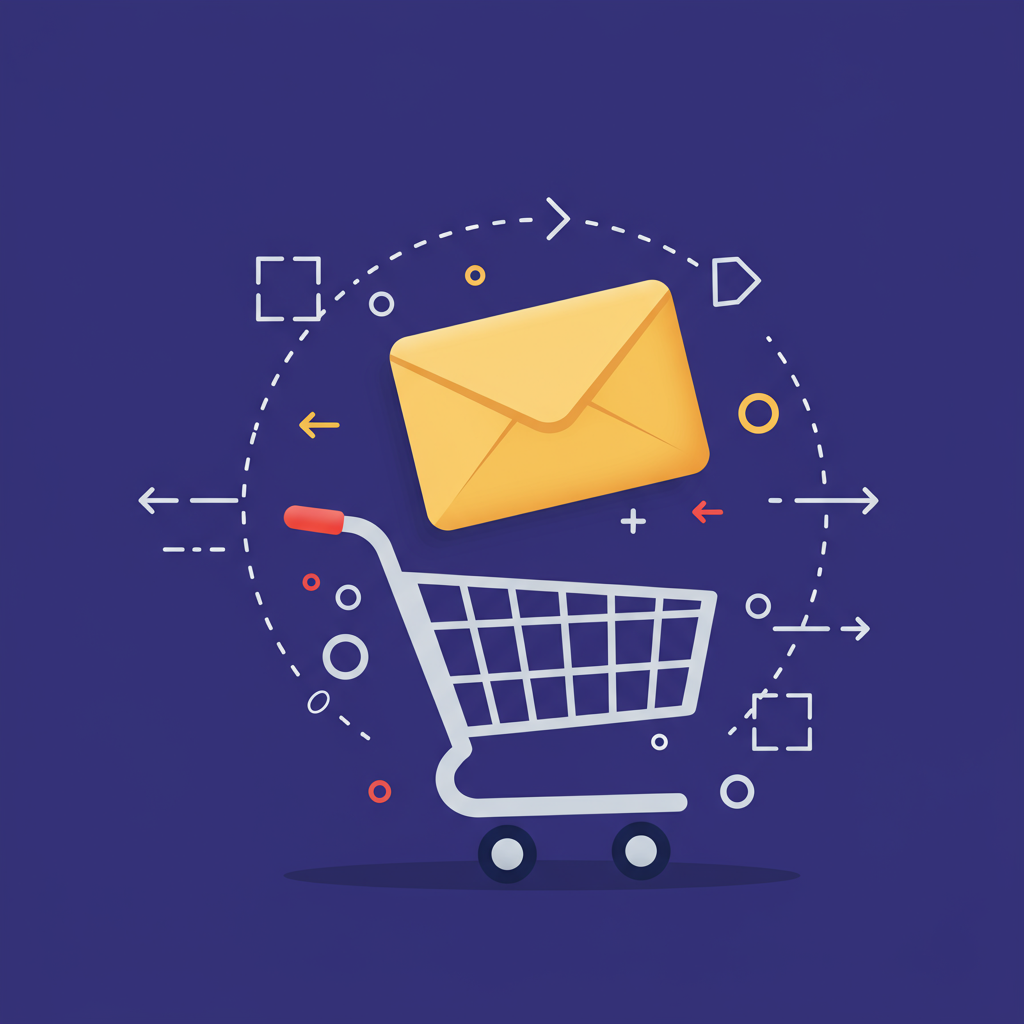Unlock lost revenue and re-engage potential customers with a powerful, personalized email strategy.
As a merchant, I know the sting of an abandoned cart. You’ve done the hard work: attracting visitors, showcasing your products, and guiding them to the checkout. Then, at the last moment, they disappear.
It’s a common scenario in e-commerce. In fact, studies show that the average cart abandonment rate hovers around 70%. That’s a significant chunk of potential sales slipping through your fingers.
But here’s the good news: not all is lost. Many of these ‘lost’ customers can be recovered, and one of the most effective tools in your arsenal is the abandoned cart recovery email.
I’ve seen firsthand how a well-crafted email series can turn a missed opportunity into a successful conversion. It’s not just about sending a reminder; it’s about understanding why they left and gently nudging them back.
Think of it as a friendly tap on the shoulder, a reminder that they left something valuable behind. My goal today is to walk you through building a robust, effective abandoned cart email strategy specifically for your Shopify store.
We’ll cover everything from the timing of your emails to the content that converts, ensuring you’re equipped to reclaim those nearly-completed purchases.
Let’s start with the core concept: a series of emails, not just a single one. A multi-email sequence gives you multiple chances to connect, address concerns, and offer incentives.
I typically recommend a three-email sequence. This allows for escalation without being overly aggressive or spammy. Each email serves a distinct purpose.
**Email 1: The Gentle Reminder**
This is your first touchpoint, sent relatively soon after abandonment. Its purpose is simple: to remind the customer about their cart.
I usually send this email within 30 minutes to an hour of abandonment. The sooner you reach out, the higher the chance they’re still in a shopping mindset.
The subject line should be clear and concise, something like: ‘Oops! Did you forget something?’ or ‘Your cart is waiting!’ Personalization, like including their name, can also boost open rates.
In the body, I keep it light and helpful. Reiterate the items they left behind, perhaps with small product images. A clear call-to-action (CTA) button, like ‘Return to your cart,’ is essential.
I also like to include a brief, friendly message offering assistance, such as ‘If you had any trouble checking out, please let us know!’
**Email 2: Adding Value or Addressing Concerns**
If the first email doesn’t convert, this second email, sent 24-48 hours later, is where I start to add more value or address potential hesitations.
The subject line can be a bit more persuasive: ‘Still thinking about it?’ or ‘Don’t miss out on these!’
Here, I might introduce a small incentive, like free shipping or a modest discount (e.g., 5-10% off). Be careful not to offer discounts too early, as customers might learn to abandon carts just to get a deal.
Alternatively, I might focus on social proof. Include a few glowing customer testimonials or reviews related to the products in their cart. This builds trust and alleviates doubts.
You could also highlight key benefits of your products or address common FAQs. Perhaps they were unsure about sizing, returns, or delivery times. Proactively answering these can remove barriers.
**Email 3: The Last Chance/Urgency Play**
This final email, sent 3-5 days after abandonment, is your last strong push. It’s about creating a sense of urgency or a final compelling reason to complete the purchase.
Subject lines for this email often convey urgency: ‘Your cart expires soon!’ or ‘Last chance for your items!’
I might offer a slightly stronger discount here if the previous one didn’t work, or emphasize that the items in their cart are low in stock or popular.
Reiterate the value proposition of your products and remind them of the benefits they’ll gain. Make it clear that this is their final opportunity before the cart is cleared or the offer expires.
Always include a prominent ‘Complete Your Order’ CTA. I also make sure to include links to customer support or an FAQ page in case they still have questions.
**General Best Practices I Always Follow:**
**Personalization:** Beyond just their name, dynamically insert the actual products they left behind. This makes the email highly relevant.
**Clear Call-to-Action (CTA):** Make your ‘Return to Cart’ or ‘Complete Your Order’ button stand out. Use contrasting colors and clear, actionable text.
**Mobile Optimization:** A vast majority of people check emails on their phones. Ensure your emails look great and are easy to navigate on any device.
**Branding Consistency:** Your recovery emails should feel like an extension of your brand. Use your logo, brand colors, and consistent tone of voice.
**A/B Testing:** I constantly test different subject lines, email content, CTA button text, and even timing. Small tweaks can lead to significant improvements in recovery rates.
**Segmentation:** If you have different customer segments (e.g., first-time buyers vs. repeat customers), consider tailoring your recovery emails to each group.
**Analytics:** Monitor your open rates, click-through rates, and, most importantly, your conversion rates for each email in the series. This data is invaluable for optimization.
Shopify offers excellent built-in abandoned cart recovery features, and there are also many powerful apps in the Shopify App Store that can automate and enhance this process, offering more advanced segmentation and analytics.
Implementing a robust abandoned cart recovery strategy is one of the most impactful things you can do to boost your Shopify store’s revenue without spending more on acquiring new customers.
It’s about nurturing existing leads and providing that extra push they need to complete their purchase. I encourage you to set up or refine your own sequence today.
What do you think about these strategies? Have you found success with specific tactics?
By following these guidelines, I’m confident you’ll see a noticeable increase in your recovered sales and a healthier bottom line for your Shopify business.






